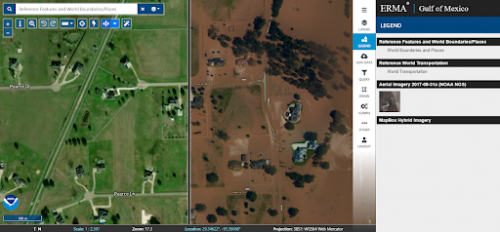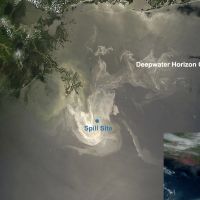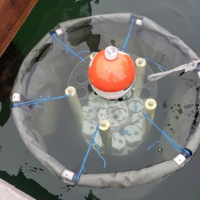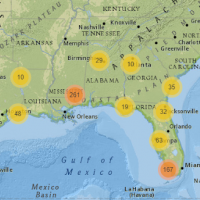In the decades that NOAA’s Office of Response and Restoration has been providing scientific support for responses to oil and chemical spills, OR&R scientists have developed a trove of specialized tools to help them do their work. Responders today can even spot spills from space with a trajectory tool and a little help from an important partner.
Technology Designed for Disasters
NOAA’s Office of Response and Restoration develops scientific solutions in its mission to keep the coasts clean from threats of oil, chemicals, and marine debris. Much of this work centers around disasters—both natural and human-caused.
OR&R’s scientific support comes in many forms. The tools and technology we develop, use, and train others to use are one of the most integral ways the office helps to prepare for, respond to, and recover after disasters.
This week, we’re taking a closer look at some of the tools OR&R uses before, during, and after a disaster. From mapping and data management tools such as ERMA and DIVER, to satellite imagery and NOAA’s Response Asset Directory, these tools each have an important role to play.
Learn more about Technology Designed for Disasters
Studying how oil spills impact life in the open ocean is challenging for several reasons. Spills can happen suddenly, in hard-to-reach locations, and conditions in the open ocean are always changing. That’s why NOAA scientists Sarah Allan and Lisa DiPinto worked with a team to design a new tool that allows researchers to conduct toxicity tests, which are traditionally done in a laboratory, in the open ocean.
When it comes to disasters, it takes the right tools to prepare for, respond to, and recover from their impacts. Learn more about NOAA's Response Asset Directory on our blog.
 An official website of the United States government.
An official website of the United States government. 



